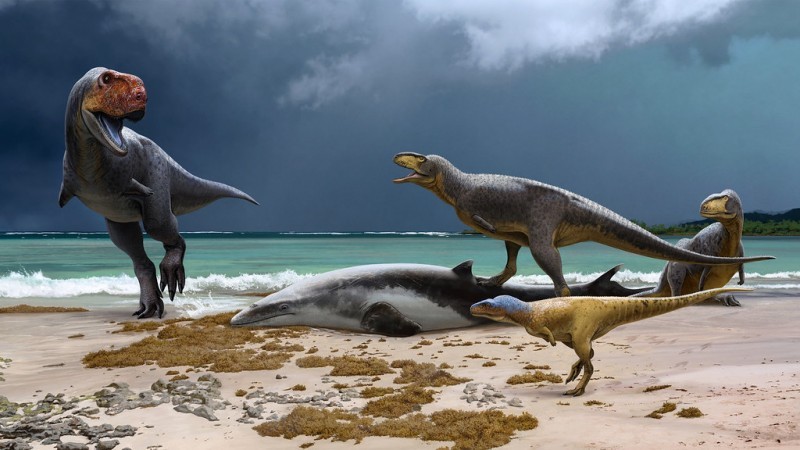Fez – Researchers and scientists suggest that the last dinosaurs vanished from Earth 66 million years ago, and although there is evidence that the cause was due to an asteroid hit, the exact nature of this catastrophic event is still unknown.
However, a new discovery in North Africa reveals more clues.
New Abelisaurus fossils found in Morocco prove that African dinosaurs remained a diverse species up to the very end, confirming that their demise came suddenly, with the impact of a giant asteroid.
The causes of the mass extinction have been subject to debate in the scientific community for two centuries, with some theories attributing it to natural catastrophes while the gradual changes in the environment during the dinosaur era.
The fossil record shows that the Cretaceous period (145 million to 66 million years ago) ended with an extraordinary wave of extinction, as huge numbers of species disappeared worldwide within a brief period.
Africa, being a huge landmass, most probably has had far more dinosaur species than North America. Africa has few terrestrial rocks from this period due to the high levels of volcanic activity that pushed sea levels up, submerging much of the continent under shallow seas.
Fossils rarely occur in marine rocks, but rarely doesn’t mean never, and Morocco stands out as the best example in this case.
The fossils of the two new Abelisaurus provide invaluable insights into the diversity and dynamics of dinosaur life on the African continent during the late Cretaceous period.
One of the fossil discoveries reveals tibia, a shin bone which is smaller than one in a Chenanisaurus, but large compared to modern predators. The other is a bone from the foot of a slightly smaller Abelisaurus, just three meters long.
The newly discovered fossils, believed to be primitive relatives of the famous Tyrannosaurus rex, challenge conventional perceptions of dinosaur ecosystems and behaviors.
The fossils were found just outside of Casablanca. The Abelisauridae family, from which the fossils have been identified, are carnivorous dinosaurs that shared traits with their more famous northern counterparts, the tyrannosaurs.
This coexistence of various species demonstrates that the region was a hub of dinosaur diversity prior to the cataclysmic asteroid impact that ultimately led to the mass extinction event.
Africa’s last diverse predatory dinosaurs suggest that immediately before their extinction, the dinosaurs thrived.
For over 100 million years, the dinosaur species evolved and diversified, producing a remarkable range of species from predators and herbivores, species that lived underwater and species that flew in the sky. Then due to a single catastrophic moment, everything was wiped out by dust and soot from the asteroid impact, with the exception of a half-dozen species.
Evolution was driven by rare, improbable events like asteroid impacts. Science too, is often driven forward by unlikely events like the discovery of dinosaurs buried millions of years ago, at the bottom of the sea.
Read also: Discovery of Ancient Dinosaur Offers Glimpse into Morocco’s Diverse Prehistoric Ecosystem
















